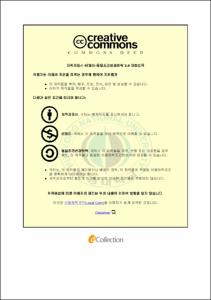알루미늄 판재소재의 압출점접합공정의 접합강도에 관한 연구
- Alternative Title
- A study on welding strength of extru-riveting process of aluminum plate
- Abstract
- This paper is to study the welding process of aluminum in high temperature conditions basing on the mechanism of extrusion, as so called extru-rivet welding process. The plates made from moreover Al5052 is popular with welding industry and manufacturing industry.
Generally the welding of aluminum is difficult. Though the oxide film can protect aluminum material from being eroded in the air, it also increases the strength and the melting point of the aluminum material, which makes it difficult to weld in traditional welding method.
And in addition, it take a short time for the aluminum to react with oxygen. This paper introduces welding process of two different methods. One is based on the normal stress and the other takes advantage of shear stress.
The method that uses normal stress is called extru-pressing welding, and the other that shear stress is extru-shearing welding. It was known by simulation and experiments that two rods of aluminum can be welded on the end sections by hot pressure welding method using stepped welding dies whithout relative rotation movement of contracted aluminum rods needed for the purpose of friction heating and pressure. Two rods was put in the same center line and a strong press is added to the end section. When shearing deformation occurs in the vertical direction, the material flows into the step. The material that is extru into the cavity has the same shape with the cavity. For the case of extu-welding process, there shearing effects that occurs between two plates, and simultaneously, there is a overlap between and impurities are all extru into cavity. A normal stress is added on the upper die, and when shearing occurs, the material flows into the cavity whose shape is same with the empty cavity.
Simulation is carried out to help design the extru-riveting welding dies for the welding of aluminum in traditional way.
Experiments are also done to identify the weldability of aluminum. And moreover, other experiments are done to the welded specimens, including bending test, tensile test and micro examination.
- Issued Date
- 2010
- Awarded Date
- 2010. 8
- Type
- Dissertation
- Publisher
- 부경대학교
- Alternative Author(s)
- Lee, Jung Hoon
- Affiliation
- 기계공학과
- Department
- 산업대학원 기계공학과
- Advisor
- 진인태
- Table Of Contents
- 목 차
List of Figures
List of Table
제 1 장 서 론 1
1.1 연구 배경 1
1.2 연구목적 및 내용 6
1.3 논문의 구성 10
제 2 장 알루미늄 판재소재의 압출점접합에 관한 이론 11
2.1 압출점접합의 접합특성 11
2.2 압출점접합의 금형설계 15
2.3 압출점접합 공정해석의 이론적 배경 21
2.4 압출점접합의 성형해석 24
제 3 장 알루미늄 판재소재의 압출점접합 실험 및 고찰 26
3.1 압출점접합의 실험장치 26
3.2 압출점접합 금형구조 27
3.3 압출점접합의 실험조건 30
3.4 압출점접합의 실험결과 및 고찰 33
3.4.1 압출점접합된 알루미늄 판재 33
3.4.2 압출점접합된 알루미늄 판재의 접합 단면형상 35
3.4.3 압출점접합된 알루미늄 판재의 전단강도 36
3.4.4 압출점접합된 알루미늄 판재의 인장강도 39
제 4 장 결 론 42
참 고 문 헌 43
Abstract 46
- Degree
- Master
- Files in This Item:
-
-
Download
 알루미늄 판재소재의 압출점접합공정의 접합강도에 관한 연구.pdf
기타 데이터 / 10.41 MB / Adobe PDF
알루미늄 판재소재의 압출점접합공정의 접합강도에 관한 연구.pdf
기타 데이터 / 10.41 MB / Adobe PDF
-
Items in Repository are protected by copyright, with all rights reserved, unless otherwise indicated.